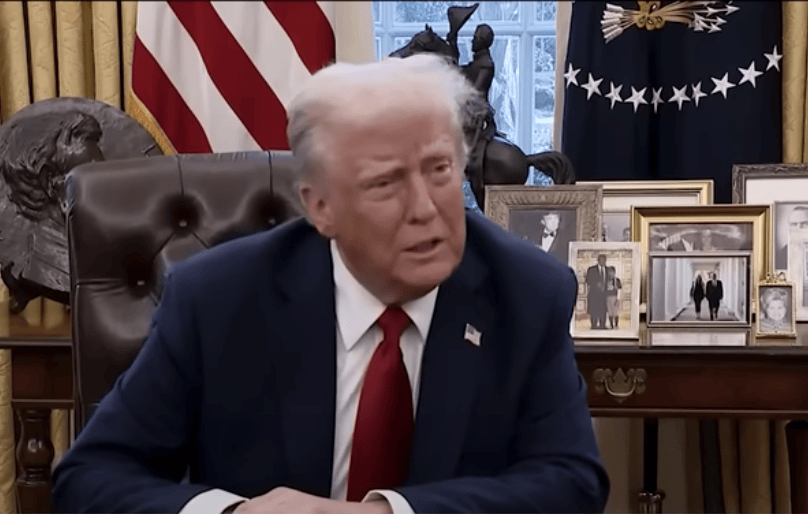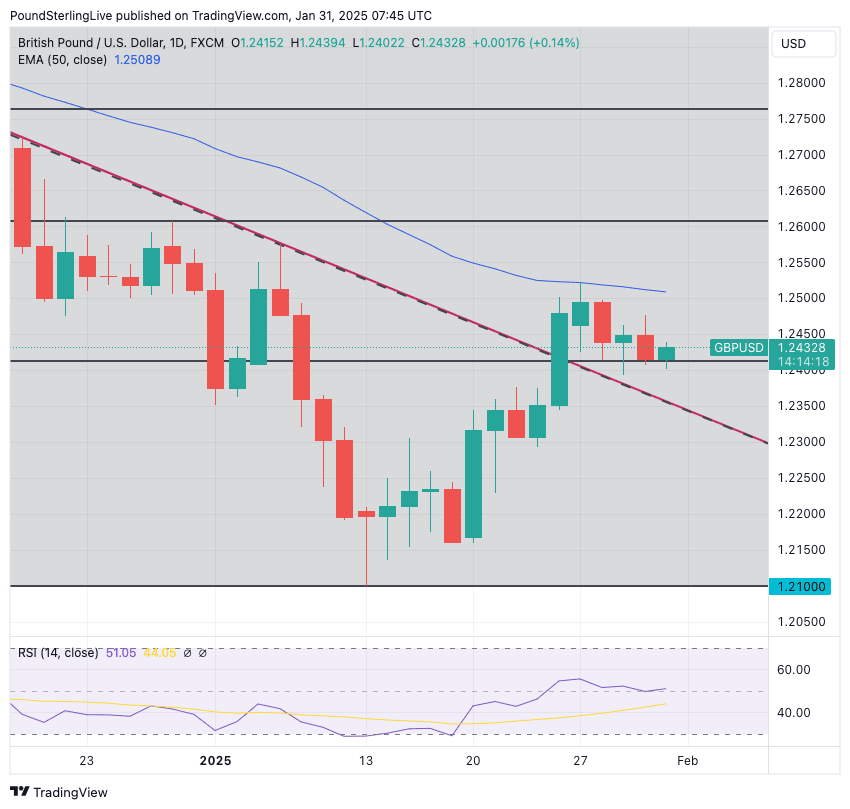
Above: Trump delivers comments on tariffs on January 30.
Foreign currency markets are bracing for the announcement of tariffs on Canada and Mexico.
"We'll be announcing the tariffs on Canada and Mexico for a number of reasons," said Trump, effectively confirming the imposition of the import tax on February 01.
The tariffs will have direct implications for the Canadian Dollar and Mexican Peso, but the implications extend far beyond the shores of North America.
Trump has made threats, and now it is time to act. Unless he delivers fully on recent threats, the market will substantially lower tariff risks, judging that the President talks a tough game but will readily whittle down his threats if the opposing side is ready to make concessions.
"Tariffs tend to be inflationary which should lift the USD," says Jane Foley, Senior FX Strategist at Rabobank.
The Dollar rose following Trump's victory in November but retreated following the President's inauguration.
Part of the reason for this is the lack of substantive action on tariffs and an apparent willingness to negotiate on the matter.
Further USD weakness will be likely if Trump swerves in placing tariffs on his two North American neighbours.
The Euro and Pound Sterling would extend a recent recovery under such circumstances, putting them on a firmer footing at the start of February.
Above: GBPUSD has recovered through the second half of January. The extension of that recovery depends on events in the coming days regarding tariffs.
If tariffs are delivered, the initial focus will fall on CAD and MXN, with risks that both currencies could 'gap' lower when markets open for trade in Asia on Monday.
The President proposed tariffs of 25% on $900BN worth of goods imported from Canada and Mexico and a 10% tariff on Chinese imports at a later, unspecified date.
Both Mexico and Canada are preparing retaliatory tariffs.
Trump has linked the tariffs to border security, demanding stronger immigration enforcement from Mexico and Canada.
Mexico and Canada have made concessions (e.g., increased border monitoring), but it's unclear if that will be enough to halt tariffs.
The tariffs are expected to disrupt North American supply chains, particularly in sectors like oil, auto manufacturing, and agriculture.
Economists warn that this could increase costs for U.S. manufacturers and raise consumer prices, but Canada and Mexico would likely feel the largest negative economic impact.
Analysts at MUFG estimate that the Canadian dollar will weaken by 5-10% if Trump imposes 25% tariff hikes on imports from Canada.
Isabella Rosenberg, a Macro Strategist at Goldman Sachs, analyzed the potential effects of a hypothetical 25% U.S. tariff on all Canadian imports. She estimated that such a tariff could result in a 13% appreciation of the USD against the Canadian Dollar (USD/CAD)
Heading into any tariff shock, Canadian business investment remains subdued, and the labour market shows signs of softness. The Bank of Canada said Thursday that it stood ready to cut interest rates further in the event of a tariff war between the two countries.
Lower interest rates would help cushion Canada's economy, although the currency would likely fall to record lows against the U.S. Dollar.
The mechanical nature of cross-currency dynamics means we could also see multi-year highs in GBPCAD and EURCAD under such a significant readjustment in USDCAD.

